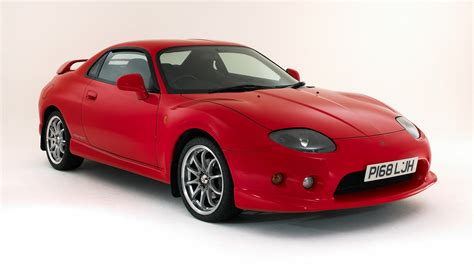
Owning a classic sports car doesn’t have to be a pipe dream for budget-conscious enthusiasts; models like the Porsche 944, Mazda Miata, and BMW Z3 offer exhilarating performance and timeless style without breaking the bank, proving that entry into the classic car world is more attainable than many believe.
For those yearning for the open road in a vintage sports car, the financial barrier to entry can often seem insurmountable. However, a selection of classic sports cars provides an accessible pathway for enthusiasts seeking a blend of performance, style, and heritage, all while remaining within a reasonable budget. These affordable classics offer an entry point into a vibrant community and the unique driving experience that only vintage vehicles can provide. While the definition of “affordable” is subjective and varies depending on individual financial circumstances, this article explores models that generally present a lower initial purchase price and comparatively manageable maintenance costs relative to more prestigious or rare classic sports cars.
Affordable Classics: A Glimpse into Attainable Automotive Dreams
The allure of classic sports cars lies in their distinctive designs, engaging driving dynamics, and the sense of nostalgia they evoke. While some vintage models command exorbitant prices at auction, several options remain within reach for budget-minded enthusiasts. These attainable classics often provide a similar level of driving pleasure and aesthetic appeal as their more expensive counterparts, allowing owners to experience the joy of classic car ownership without incurring significant financial strain.
Several models have emerged as prime candidates for those seeking affordable classic sports cars. Each offers a unique blend of performance, style, and reliability, making them attractive options for entry-level collectors and enthusiasts alike.
Porsche 944: A Transaxle Treasure
The Porsche 944, produced from 1982 to 1991, represents a compelling blend of performance, practicality, and Porsche heritage. As the successor to the Porsche 924, the 944 featured a more robust engine, improved handling, and a more refined interior. Its transaxle design, with the engine in the front and the transmission in the rear, contributes to a balanced weight distribution, resulting in responsive and predictable handling.
The 944 was available in several variants, including the base model, the 944S, the 944 Turbo, and the 944S2. The base model featured a 2.5-liter inline-four engine, while the 944S boasted a 16-valve version of the same engine, delivering increased horsepower and torque. The 944 Turbo, introduced in 1985, offered a significant performance boost thanks to its turbocharged engine. The 944S2, produced from 1989 to 1991, featured a larger 3.0-liter engine, providing even more power and torque.
“The Porsche 944 is one of the great values in the collector-car world right now,” stated an analyst from Hagerty, a leading classic car insurance and valuation company. “It offers a lot of performance and Porsche cachet for the money.”
The affordability of the Porsche 944 stems from its relatively high production numbers and its reputation for reliability. While maintenance can be more expensive compared to some other cars on this list, the 944’s robust construction and readily available parts make it a viable option for enthusiasts willing to perform some of their own maintenance. Furthermore, its iconic design and engaging driving dynamics make it a rewarding car to own and drive.
Mazda Miata (NA): The Embodiment of Driving Fun
The Mazda Miata, introduced in 1989, revolutionized the roadster market with its simple, lightweight design and focus on driving enjoyment. The first-generation Miata, known as the NA, is particularly appealing for its affordability and pure driving experience. Inspired by classic British roadsters, the Miata NA offers a similar open-air experience without the unreliability often associated with its predecessors.
The Miata NA is powered by a 1.6-liter or 1.8-liter inline-four engine, delivering ample power for spirited driving. Its lightweight chassis and well-tuned suspension contribute to its nimble handling and responsive steering. The Miata NA’s simple design also makes it relatively easy to maintain and repair, further contributing to its affordability.
The Miata NA has cultivated a large and enthusiastic following, resulting in a thriving aftermarket parts industry and a wealth of resources for owners. This community support makes it easier to find parts, information, and assistance with maintenance and repairs. Its reliability, affordability, and fun-to-drive nature make the Mazda Miata NA a perennial favorite among budget-minded enthusiasts.
BMW Z3: A Modern Classic Roadster
The BMW Z3, produced from 1996 to 2002, represents a more modern take on the classic roadster formula. While the Z3 may not possess the same vintage charm as some other cars on this list, it offers a compelling blend of BMW engineering, sporty styling, and relative affordability.
The Z3 was available with a range of inline-four and inline-six engines, providing a variety of performance options. The inline-six models, in particular, offer a smooth and powerful driving experience. The Z3’s rear-wheel-drive layout and well-tuned suspension contribute to its balanced handling and engaging driving dynamics.
The Z3’s affordability stems from its relatively high production numbers and its availability in various trim levels and engine configurations. While maintenance can be more expensive compared to the Miata, the Z3’s robust construction and BMW’s reputation for engineering excellence make it a relatively reliable car. Its modern styling, comfortable interior, and engaging driving dynamics make the BMW Z3 a compelling option for enthusiasts seeking a classic roadster experience with a touch of modern refinement.
Other Notable Affordable Classics
In addition to the Porsche 944, Mazda Miata NA, and BMW Z3, several other classic sports cars offer a compelling blend of performance, style, and affordability. These include:
- Alfa Romeo Spider: The Alfa Romeo Spider, produced from 1966 to 1993, is a stylish and iconic Italian roadster. Its distinctive design, engaging driving dynamics, and rich heritage make it a desirable classic. While maintenance can be more demanding compared to some other cars on this list, the Spider’s unique charm and rewarding driving experience make it a worthwhile option for enthusiasts willing to invest the time and effort required to maintain it.
- Mercedes-Benz SLK (R170): The first-generation Mercedes-Benz SLK, known as the R170, introduced the retractable hardtop to the roadster market. This innovative feature provides the open-air experience of a roadster with the security and weather protection of a coupe. The SLK R170 offers a blend of Mercedes-Benz luxury, sporty styling, and relative affordability.
- Toyota MR2 (W20): The second-generation Toyota MR2, known as the W20, is a mid-engine sports car that offers exceptional handling and driving dynamics. Its mid-engine layout provides excellent balance and responsiveness, making it a rewarding car to drive. The MR2 W20’s relative affordability and Toyota’s reputation for reliability make it a popular choice among enthusiasts seeking a unique and engaging driving experience.
Factors to Consider When Choosing an Affordable Classic
While the initial purchase price is a crucial factor when choosing an affordable classic sports car, several other considerations can impact the overall cost of ownership. These include:
- Maintenance and Repairs: Classic cars typically require more frequent maintenance and repairs compared to modern vehicles. Parts availability, labor costs, and the complexity of the car’s systems can all affect the cost of maintenance and repairs. It’s essential to research the potential maintenance costs associated with a particular model before making a purchase.
- Insurance: Insuring a classic car can be more expensive compared to insuring a modern vehicle. Insurance rates are typically based on the car’s value, age, and rarity. It’s advisable to obtain quotes from several insurance companies specializing in classic car insurance before making a purchase.
- Storage: Storing a classic car properly is essential to prevent damage from the elements, rodents, and other factors. If you don’t have access to a garage or covered storage, you may need to rent a storage space, which can add to the overall cost of ownership.
- Fuel Economy: Classic sports cars typically have lower fuel economy compared to modern vehicles. Fuel costs can add up over time, especially if you plan to drive the car frequently.
- Rust and Corrosion: Rust and corrosion are common problems in classic cars, especially those that have been exposed to harsh weather conditions. Rust repair can be expensive, so it’s essential to inspect the car carefully for signs of rust before making a purchase.
Tips for Finding and Purchasing an Affordable Classic
Finding and purchasing an affordable classic sports car requires patience, research, and a willingness to negotiate. Here are some tips to help you find the perfect classic for your budget:
- Do Your Research: Before you start your search, research the different models that interest you. Learn about their history, specifications, common problems, and market values.
- Set a Budget: Determine how much you are willing to spend on the car, including the purchase price, maintenance, repairs, insurance, and storage.
- Search Online Marketplaces: Online marketplaces like Craigslist, eBay, and Hemmings offer a wide selection of classic cars for sale. Be sure to carefully review the listings and contact the sellers with any questions you may have.
- Attend Car Shows and Auctions: Car shows and auctions can be a great place to find classic cars for sale and meet other enthusiasts.
- Inspect the Car Carefully: Before you make an offer, inspect the car carefully for signs of rust, damage, and wear. If possible, have a mechanic inspect the car as well.
- Negotiate the Price: Don’t be afraid to negotiate the price with the seller. Be prepared to walk away if the seller is unwilling to meet your budget.
- Get a Pre-Purchase Inspection: Before finalizing the purchase, have a qualified mechanic perform a thorough pre-purchase inspection. This can help identify any potential problems and give you leverage to negotiate a lower price or request repairs.
- Join a Car Club: Joining a car club can provide access to valuable resources, including technical advice, parts, and social events. Car clubs can also be a great place to meet other enthusiasts and learn more about your car.
The Enduring Appeal of Affordable Classics
The appeal of affordable classic sports cars lies in their ability to provide a unique and engaging driving experience without breaking the bank. These cars offer a blend of style, performance, and heritage that is difficult to find in modern vehicles. Owning an affordable classic can be a rewarding experience, allowing enthusiasts to connect with automotive history and enjoy the simple pleasures of driving.
The availability of relatively affordable classics like the Porsche 944, Mazda Miata, and BMW Z3 broadens the accessibility of classic car ownership, welcoming a wider range of enthusiasts into the fold. By carefully considering the factors outlined above and following the tips for finding and purchasing an affordable classic, anyone can realize their dream of owning a vintage sports car. The key is to approach the process with patience, do thorough research, and be prepared to invest the time and effort required to maintain and enjoy a classic vehicle. The rewards, however, are well worth the effort, offering a unique and enriching automotive experience.
Frequently Asked Questions (FAQ)
1. What makes a classic sports car “affordable”?
Affordability in the context of classic sports cars is relative and depends on individual financial circumstances. Generally, an affordable classic sports car has a lower initial purchase price compared to more prestigious or rare models, and it also tends to have comparatively manageable maintenance costs. Factors contributing to affordability include high production numbers, readily available parts, and relatively simple mechanical designs. The cars mentioned in the article offer a good balance of these factors, making them more accessible to budget-conscious enthusiasts. However, it’s important to remember that classic car ownership always involves some level of financial commitment for maintenance and potential repairs.
2. Are classic sports cars reliable? Should I expect frequent breakdowns?
The reliability of a classic sports car varies greatly depending on the specific model, its condition, and how well it has been maintained. Generally, classic cars require more frequent maintenance and repairs compared to modern vehicles. Models like the Mazda Miata (NA) are known for their relatively simple design and reliability, while others, like the Alfa Romeo Spider, may require more attention and specialized maintenance. Expect some level of maintenance and potential repairs, and factor these costs into your budget. A thorough pre-purchase inspection by a qualified mechanic is crucial to assess the car’s condition and identify any potential issues.
3. Where can I find parts and service for a classic sports car?
Parts and service availability depend on the specific model. Popular models like the Porsche 944, Mazda Miata, and BMW Z3 have a relatively well-established aftermarket parts industry, making it easier to find replacement parts. Online retailers, specialized classic car parts suppliers, and car clubs are valuable resources for locating parts. For service, look for mechanics specializing in classic cars or those with experience working on the specific model you own. Car clubs can also provide recommendations for trusted mechanics in your area. It’s always a good idea to research parts and service availability before purchasing a classic car.
4. Is it okay for me to use a classic sports car as a daily driver?
Using a classic sports car as a daily driver is possible, but it depends on several factors, including the car’s reliability, your tolerance for maintenance and repairs, and your driving conditions. Classic cars typically have lower fuel economy and may not be as comfortable or convenient as modern vehicles. Daily driving can also accelerate wear and tear, potentially increasing maintenance costs. If you plan to use a classic sports car as a daily driver, choose a model known for its relative reliability, ensure it is in good mechanical condition, and be prepared for more frequent maintenance. Consider having a modern vehicle as a backup for days when the classic is undergoing maintenance or when weather conditions are unfavorable.
5. How do I determine the fair market value of a classic sports car I’m interested in buying?
Determining the fair market value of a classic sports car involves researching recent sales data, considering the car’s condition and originality, and comparing it to similar examples. Online valuation guides like those provided by Hagerty, Kelley Blue Book (for older models), and NADAguides can provide a starting point for your research. However, these guides are just estimates, and the actual market value can vary depending on several factors. Attend car shows and auctions to observe prices firsthand, and compare the car you’re interested in to similar examples listed for sale online. A pre-purchase inspection can also help assess the car’s condition and identify any factors that may affect its value. Engaging with car clubs and online forums can provide valuable insights from experienced owners and enthusiasts.
6. What kind of insurance do I need for a classic sports car?
You’ll typically need classic car insurance, which differs from standard auto insurance. Classic car insurance policies are designed to cover the unique needs of vintage vehicles, including agreed-value coverage (where the car is insured for its appraised value, rather than its depreciated value), specialized repair networks, and coverage for spare parts. Hagerty and American Collectors Insurance are well known providers for classic car insurance.
7. What are the typical maintenance requirements for classic sports cars?
Maintenance depends on the specific model and age. Common maintenance tasks include regular oil changes, fluid checks, tune-ups (spark plugs, distributor), brake inspections, tire rotations, and coolant flushes. You’ll likely need to pay closer attention to things like rubber hoses and belts, which can degrade over time. Rust prevention is also critical, particularly if the car is driven in areas with harsh weather.
8. Can I modify a classic sports car?
Modifying a classic sports car depends on your goals and preferences. Some purists prefer to keep their cars original, while others enjoy personalizing them. Modifications can range from performance upgrades to cosmetic enhancements. However, modifications can affect the car’s value, particularly if they deviate significantly from the original specifications. Before making any modifications, research the potential impact on the car’s value and consider the historical significance of the vehicle. It’s also advisable to consult with experts or car clubs to ensure that any modifications are done properly and safely.
9. What are the best resources for learning more about classic sports cars?
There are numerous resources available for learning more about classic sports cars. Car clubs are a valuable source of information, technical advice, and social events. Online forums and websites dedicated to specific models can provide a wealth of knowledge and connect you with other enthusiasts. Automotive magazines, books, and documentaries can offer historical context and technical insights. Attending car shows and auctions can provide opportunities to see classic cars up close and talk to owners and experts. Some helpful websites include Hemmings, ClassicCars.com, and various marque-specific online forums.
10. What are some potential issues to look for when inspecting a classic sports car before purchase?
When inspecting a classic sports car, look for signs of rust, especially in areas prone to corrosion, such as the undercarriage, wheel wells, and around windows and trim. Check for body damage, such as dents, scratches, and mismatched paint, which may indicate previous accidents or repairs. Inspect the engine for leaks, unusual noises, and overall condition. Examine the interior for wear and tear, such as cracked seats, faded carpets, and damaged trim. Test all the electrical systems, including lights, gauges, and accessories. Finally, have a qualified mechanic perform a thorough inspection to identify any potential mechanical problems. A comprehensive inspection can help you make an informed decision and avoid costly surprises down the road.









